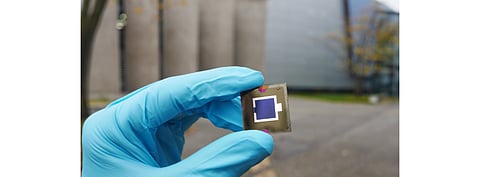

Researchers at Germany's Helmholtz Zentrum Berlin (HZB) have exceeded their previous perovskite and silicon tandem solar cell efficiency of 29.15% to now report 29.80%, inching very close to breaching the 30% target they have set for themselves (see HZB Team Aiming To Exceed 30% Tandem Cell Efficiency).
HZB said the 29.80% value is now officially certified by Fraunhofer ISE CalLab, and is documented in the National Renewable Energy Laboratory (NREL) charts.
With a focus on optical improvement of the silicon heterojunction (HJT) bottom cell, the team achieved the new 'record' value of 29.80% on about 1 sq. centimeter cell area by adding a nanotextured front side and a dielectric back reflector.
The team relied on a computer stimulation to calculate photocurrent density in the perovskite and silicon subcells for different geometries with and without nanotextures, eventually producing perovskite silicon tandem solar cells with different textures. According to the team, the nanotextures improved light absorption enabling better film formation of the perovskite layers.
By using a dielectric reflector to the backside of the tandem solar cell, the team said, it was able to reflect infrared light back into the silicon absorber thus improving the photocurrent.
With this successful experiment, the researchers are ever more hopeful of achieving well over 30% efficiency soon. Incidentally, soon after HZB announced the 29.15% efficiency in January 2020, Oxford PV followed up with 29.52% which led to HZB working more intently on this 'exciting' race (see Oxford PV Claims 29.52% Perovskite Solar Cell Efficiency).
"An efficiency of 30 % is like a psychological threshold for this fascinating new technology which could revolutionize the photovoltaic industry in the near future," said Steve Albrecht, who is working on perovskite thin films at the HySPRINT lab at HZB.
